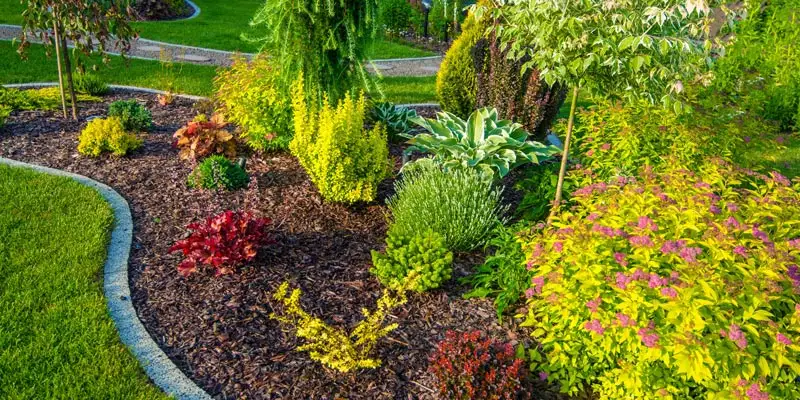Fascination About Landscape Design
Fascination About Landscape Design
Blog Article
10 Easy Facts About Landscape Design Shown
Table of ContentsLandscape Design Fundamentals ExplainedRumored Buzz on Landscape DesignSome Of Landscape DesignExamine This Report on Landscape Design
When creating a residential landscape, one of the most essential step is to place a plan on paper. Establishing a plan of attack will save you time and cash and is most likely to cause a successful layout. A plan of attack is established with the 'style process': a detailed technique that thinks about the ecological problems, your needs, and the elements and concepts of design.The five steps of the style procedure include: 1) performing a website supply and evaluation, 2) determining your demands, 3) developing functional layouts, 4) creating conceptual layout plans, and 5) drawing a final layout plan. The first three actions develop the aesthetic, practical, and horticultural demands for the style. The last 2 steps then use those requirements to the development of the final landscape plan.
This is a vital action for both plant choice and placement and situating family tasks and functions. It is essential since the very same climate problems that impact the plantstemperature, humidity, rain, wind, and sunlightalso influence you, the individual. The following action is to make a list of your demands and desiresthis helps you figure out exactly how your yard and landscape will be made use of.
The practical diagram is then utilized to find the activity rooms on the website and from this representation a theoretical plan is created. The last action is a last layout that includes all the hardscape and growing information that are necessary for installment. Throughout the style procedure there are ten important points to think about: for plant option and task area by considering what you desire and require to help identify forms and arrange spaces by marking task locations and connecting with aspects for both the environment and the user by utilizing massing and layering methods such as transition locations and focal points in the products, the shades, and the surface area structures for the growth and upkeep of plants by utilizing sustainable layout practices An extensive stock and analysis of the site is essential to figure out the ecological conditions for plant development and the ideal usage of the site.
Not known Details About Landscape Design
The kind of dirt determines the nutrients and dampness readily available to the plants. It is constantly best to utilize plants that will flourish in the existing dirt. Soil can be modified, change is typically costly and many times inadequate. Existing plants can give clues to the soil kind. Where plants expand well, keep in mind the soil problems and use plants with similar growing needs.

Sun/shade patterns, the amount and length of direct exposure to sunlight or index shade (Number 1), develop microclimates (in some cases called microhabitats) - Landscape Design. Recording site conditions and existing greenery on a base map will reveal the location of microclimates in the backyard. Plants usually fall under one or two of four microclimate categories-full sun, partial color, color, and deep shade
Everything about Landscape Design
Utilities such as power lines, septic tanks, below ground utilities and roof overhangs establish plant area. Utilize a land surveyor's plat of your property for the limits and location of your home.


Budget worries include the materials, first installation prices and the on-going maintenance Click Here costs. Determine the moment and money you are eager to take into preserving the plants and hardscape-be reasonable regarding your intents and capability. Number 3. Present usage areas. Credit Rating: Gail Hansen, UF/IFAS Number 4. Recommended usage locations. Credit Score: Gail Hansen, UF/IFAS There are lots of various landscape layout themes- from straightforward to complex, but it is valuable to choose one to lead your plant and product selection.
Many individuals find it handy to look in horticulture publications and publications for ideas. This is a great beginning, yet know that the gardens in the pictures were selected since they are exceptional examples. Take a look at the pictures with a vital eye to collect concepts that you can adapt to your passion level, your spending plan and your website.
Choose if you intend to open your lawn, shut your lawn, or a little of both, to these views (Landscape Design). Simply put, do you want the garden to enclose the room around you and connect primarily to the residence, or do you desire the garden to open sights and look exterior, relating to the environments? This will offer you a starting factor to consider a style
Not known Facts About Landscape Design
This is called "feeling of place", which implies it fits with the environments. There are both form themes and style themes. Every garden must have a type style, yet not all gardens have a design motif. Several household gardens have no certain style except to mix with the residence by duplicating details from the architecture such as products, shade, and form.
In a type style the company and shape of the spaces in the lawn is based either on the form of the house, the shape of the locations in between the home and the building borders, or a favored shape of the homeowner. The form theme figures out the click here for more form and organization (the format) of the areas and the links in between them.

Report this page